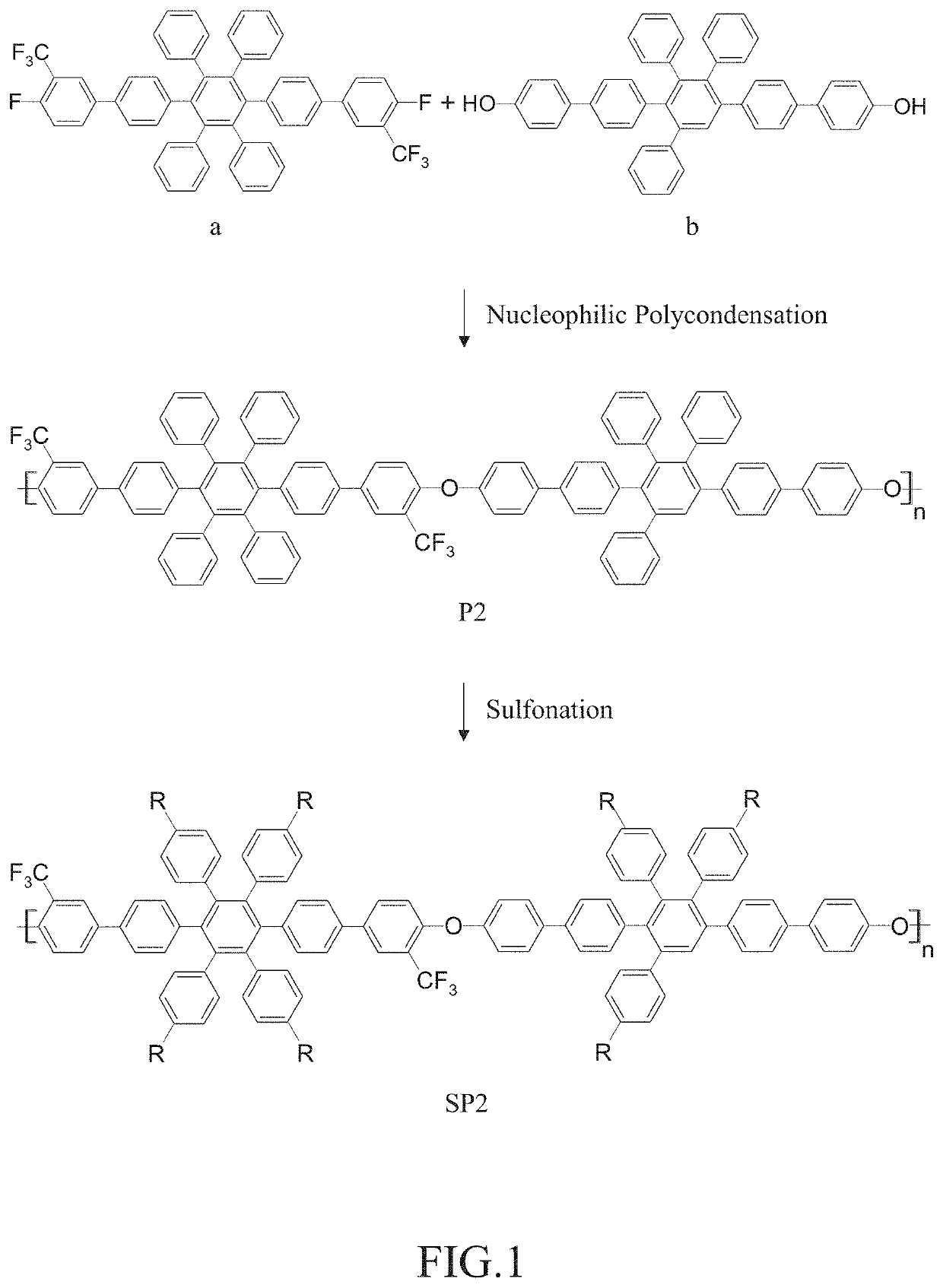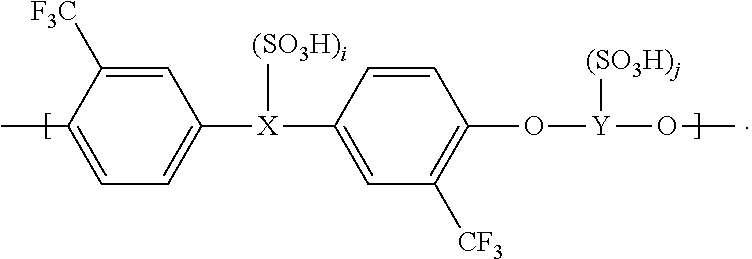Cation-conducting polymer
a technology of cation-conducting polymer and polymer, which is applied in the field of polymer, can solve the problems of reduced proton conductivity, limited performance in higher temperatures, high cost and environmental inadaptability, and achieve good physicochemical properties, hydrolytic stability and conductivity
- Summary
- Abstract
- Description
- Claims
- Application Information
AI Technical Summary
Benefits of technology
Problems solved by technology
Method used
Image
Examples
Embodiment Construction
[0009]The present invention discloses a cation-conducting polymer which has two or more repeating units, and each of the repeating units has the following formula
SO3H is hydrophilic sulfonate group, i is an integer greater than or equal to 1, and j is an integer greater than or equal to 1. Preferably, i and j are an integer from 1 to 10. In particular, the sum of i and j is an integer between 2 and 4, that is to say, each of the repeating units has 2 to 4 sulfonate groups.
[0010]In this embodiment, polymers P1, P2 and P3 without sulfonation are represented by the following formulas
n is an integer greater than or equal to 2. The polymers P1, P2 and P3 were synthesized via nucleophilic polycondensation of the difluoro monomer
[0011]With reference to the following table 1, the polymer P2, as an example, can be classified into high molecular weight polymer P2-H, medium molecular weight polymer P2-M and low molecular weight polymer P2-L according to molecular weight. The weight-average mol...
PUM
| Property | Measurement | Unit |
|---|---|---|
| temperature | aaaaa | aaaaa |
| temperature | aaaaa | aaaaa |
| temperature | aaaaa | aaaaa |
Abstract
Description
Claims
Application Information
 Login to View More
Login to View More - R&D
- Intellectual Property
- Life Sciences
- Materials
- Tech Scout
- Unparalleled Data Quality
- Higher Quality Content
- 60% Fewer Hallucinations
Browse by: Latest US Patents, China's latest patents, Technical Efficacy Thesaurus, Application Domain, Technology Topic, Popular Technical Reports.
© 2025 PatSnap. All rights reserved.Legal|Privacy policy|Modern Slavery Act Transparency Statement|Sitemap|About US| Contact US: help@patsnap.com



